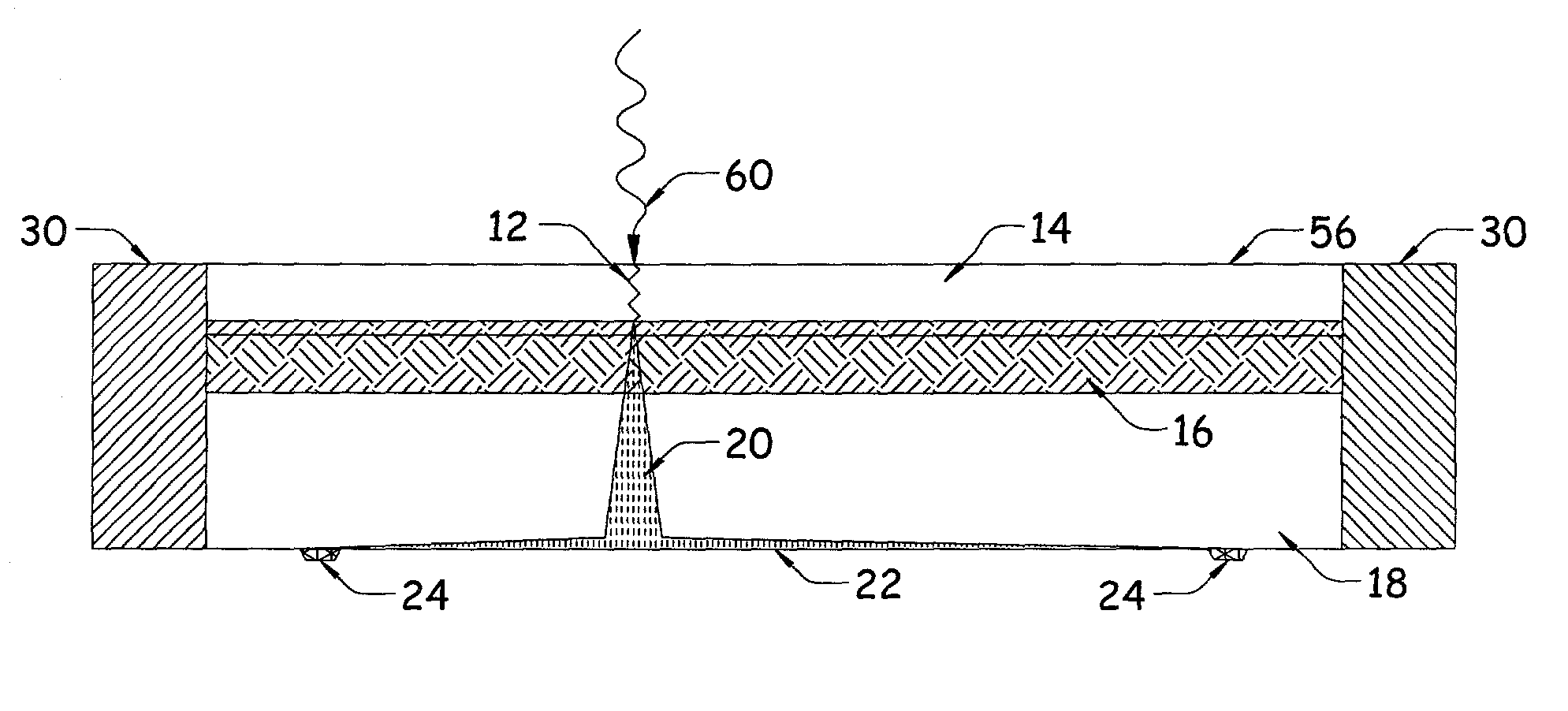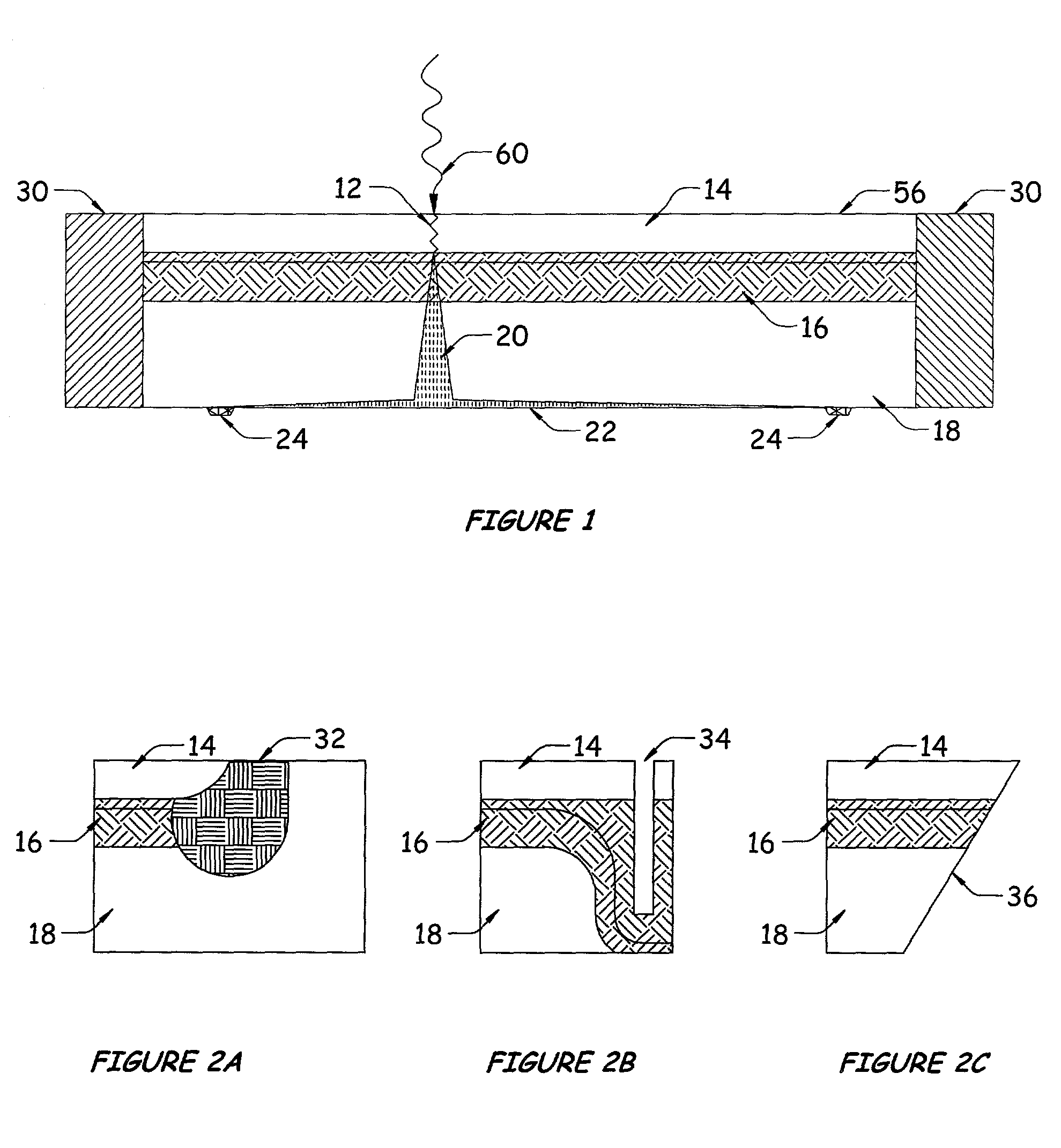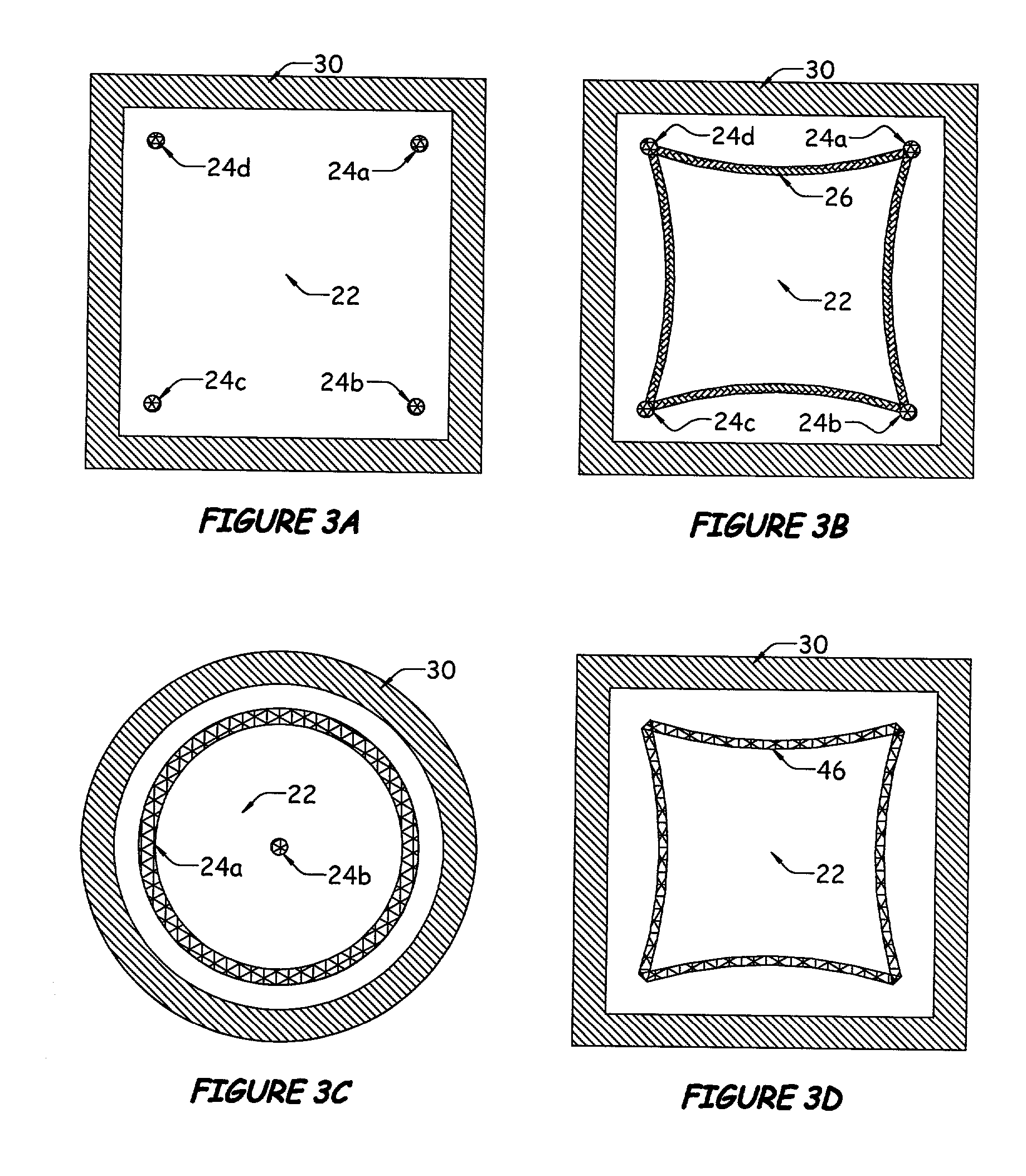Position sensitive solid state detector with internal gain
a solid state detector and gain technology, applied in the direction of radiation intensity measurement, instruments, x/gamma/cosmic radiation measurement, etc., can solve the problems of limiting the real-time dynamic range of the detector for detecting sequential pulses of radiation, introducing optical losses, and limited quantum efficiency of the photocathode material
- Summary
- Abstract
- Description
- Claims
- Application Information
AI Technical Summary
Problems solved by technology
Method used
Image
Examples
Embodiment Construction
[0051] In a typical embodiment, a large area APD is fabricated in the usual way. It can be beneficial to the spatial resolution performance of the detector to minimize the thickness of the undepleted material on both sides of the depletion region 16, especially on the input side of the detector 14, in order to minimize the spread of minority carriers 12 produced by the input signal 60. In a preferred embodiment, an n silicon substrate 18 is doped with p materials using a deep diffusion process. A field spreading structure 30 such as a guard ring 32, diffused bevel 34, or mechanical bevel 36 is incorporated into the semiconductor material to avoid edge breakdown under high reverse bias. Other field spreading structures are possible and are considered to be within the scope of this invention. Prior to applying a passivation layer to the cathode side of the device, a photomask is applied to mask off a contact pattern. The contact pattern can be somewhat arbitrary, but it is necessary t...
PUM
 Login to View More
Login to View More Abstract
Description
Claims
Application Information
 Login to View More
Login to View More - R&D
- Intellectual Property
- Life Sciences
- Materials
- Tech Scout
- Unparalleled Data Quality
- Higher Quality Content
- 60% Fewer Hallucinations
Browse by: Latest US Patents, China's latest patents, Technical Efficacy Thesaurus, Application Domain, Technology Topic, Popular Technical Reports.
© 2025 PatSnap. All rights reserved.Legal|Privacy policy|Modern Slavery Act Transparency Statement|Sitemap|About US| Contact US: help@patsnap.com



